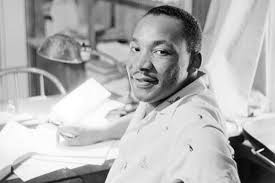
Swing jazz was enjoyed by both black and white audiences, which is what allowed the genre to play a major role in influencing the Civil Rights Movement of the 1960s. With black jazz artists holding the American public’s interest, these artists had control over the music and, therefore, the messages they released to the public, which were often rooted in black struggle. The world-renowned black jazz artists, themselves, were symbols of the liberation black America yearned for, which is why they played such a crucial role in the Civil Rights Movement.
Bebop was a new style of jazz developed after World War II in the 1940s. This ‘sub-genre’ was a more sophisticated development of traditional jazz in which artists expressed themselves without the exploitation of white imitators. Once again black musicians felt that they were being exploited for white artists gain. This new sub-genre was characterized as complex, but black musicians used this to their advantage to freely express their views on society and express their concerns for the civil rights of black America. Bebop differed from traditional jazz in many ways including the smaller band sizes, music produced for listening (rather than dancing), and the new, trendy terms that were exclusive to this sub-genre.

“God has wrought many things out of oppression. He has endowed his creatures with the capacity to create—and from this capacity has flowed the sweet songs of sorrow and joy that have allowed man to cope with his environment and many different situations.”
– Martin Luther King Jr.
King valued the jazz genre and felt it was a major tool which greatly contributed to the civil rights movement for black America. King observed that the music connected people, which was especially evident at the 1964 Berlin Jazz Festival, where people all around the world gathered to celebrate and enjoy jazz music.
Earlier jazz artists were often criticized for appealing to white stereotypes, but just as in negro spirituals, black musicians managed to slip prevalent messages into their music even as it was consumed by white audiences. Many of these songs (as shown below) hold great conviction, set the tone for the Civil Rights Movement and are American classics.
Cold empty bed, springs hard as lead
Feel like old Ned, wished I was dead
What did I do to be so black and blue?
Even the mouse ran from my house
They laugh at you, and scorn you too
What did I do to be so black and blue?
I’m white inside, but that don’t help my case
‘Cause I can’t hide what is in my face
Jazz was a major component of the Civil Rights Movement because of the influential black artists who were the faces of the genre. Jazz was also unifying because it appealed to audiences all over the world. Black artists could express their narrative as a black person in America on a platform that people of all races listened to, creating a form of unity and understanding amongst American society through music.
Jackson, Ashawnta. “Why MLK Believed Jazz Was the Perfect Soundtrack for Civil Rights.” JSTOR Daily , 16 Oct. 2019, daily.jstor.org/why-mlk-believed-jazz-was-the-perfect-soundtrack-for-civil-rights/.
Verity, Michael. “How Jazz Helped Fuel the Civil Rights Movement.” LiveAbout, 15 July 2018, www.liveabout.com/jazz-and-the-civil-rights-movement-2039542.

Login to your account